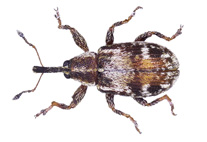Abstract
In order to identify the species of Helicotylenchus Steiner, 1945 present in Iran, 497 soil and root samples were collected from the rhizosphere of different plants and localities throughout the country during 2009-2010. A new and several known species of Helicotylenchus were identified from the collected material. H. persiaensis sp. n. is characterized by its short tail (8-11 µm , c = 54.2–79.0, c′ = 0.6–1.2), usually with smooth terminus or with 1–3 very coarse annules, rarely with minor ventral, dorsal or lateral projection, conical and truncate head with 4–5 distinct annules, stylet 22–26 µm long with anteriorly flattened knobs, relatively short body length (570–730 µm) and absence of males. This species was collected from the rhizosphere of zelkova (Zelkova carpinifolia) and maple (Acer sp.) forest trees in Golestan province, northern Iran. Also observed were H. abunaamai Siddiqi, 1972, with a small ventral projection at the tail terminus, and H. crenacauda Sher, 1966, with long projection and indented terminus, collected from sugarcane (Haft-Tapeh, Khuzestan province) and rice rhizosphere (Chabok-Sar, Gilan province), respectively. This is the first report of H. abunaamai from Iran. New data on H. crenacauda are provided.

